Local Heroes 2023
The Santa Barbara Independent’s
37th Annual Celebration
of Our Nicest Neighbors
By Indy Staff | Photos by Ingrid Bostrom
November 22, 2023

This Thanksgiving week is the Santa Barbara Independent’s 37th anniversary of publishing, and the 37th straight year that we’ve honored the Local Heroes of our community.
Every year, we ask our readers and our own staff members to look around their lives and see who has made life in this county a little better. Year after year, the list of heroes is remarkable, with far more names and good deeds than we can ever cover in one issue.
This Thanksgiving is no different. The Local Heroes of 2023 are engaged in many different activities: in schools, in sports, in medicine, in the arts, in politics, and even in helping to file taxes. Some are working their everyday jobs with verve and dedication; others are volunteering to make our lives better and more fun. All are committed to being good neighbors.
We at the Independent are grateful to them all, and we hope their stories inspire others to do the same. Thank you.
Brian “Chuckie” Roth
A Coach Among Coaches

When COVID shut down schools in March 2020, San Marcos High School physical education teacher Chuckie Roth went beyond Zoom calls to engage with his students. He offered to meet them every Sunday for a six-mile run. “I was trying to keep kids sane and have something to look forward to,” he said.
During that time, freshman Makenna Stretz told him she was interested in playing water polo. Roth, who coaches aquatics at both San Marcos and Santa Barbara City College, had her practice tossing a ball against a backboard until the pools were opened in September.
Now a senior, Stretz recently signed a scholarship offer to play water polo at Stanford University, another success story, just one of many since Roth joined the San Marcos staff in 2004.
Just as gratifying to him are the students who learn to swim across a pool for the first time in a PE class.
“I work with some intrinsically motivated athletes and other kids struggling to improve a D grade to a C,” he said. “PE is a way to teach responsibility, character, and healthy habits to reduce stress later in life.”
In 2012, Brian Charles Roth (he was dubbed “Chuckie” during his UCSB student-athlete days) was the first PE teacher to be named Santa Barbara County Distinguished Educator of the Year. He has won numerous Coach of the Year awards and championships with his high school teams and SBCC’s women’s swimming and water polo teams, which he’s coached since their inception in 2014.
Roth rises at 5 a.m., takes his two younger sons to school (his wife, Leslie, works the late shift as a labor and delivery nurse), supervises workouts, teaches two PE classes, and conducts practices for the City College women’s and San Marcos girls’ teams, and a club team, finishing at 7:15 p.m.
“I’m an everyday guy who likes to help people out,” he said. “I have some amazing parents and assistant coaches behind the scenes who help me out.”
Brianna Pettit
Blind Fitness Guide
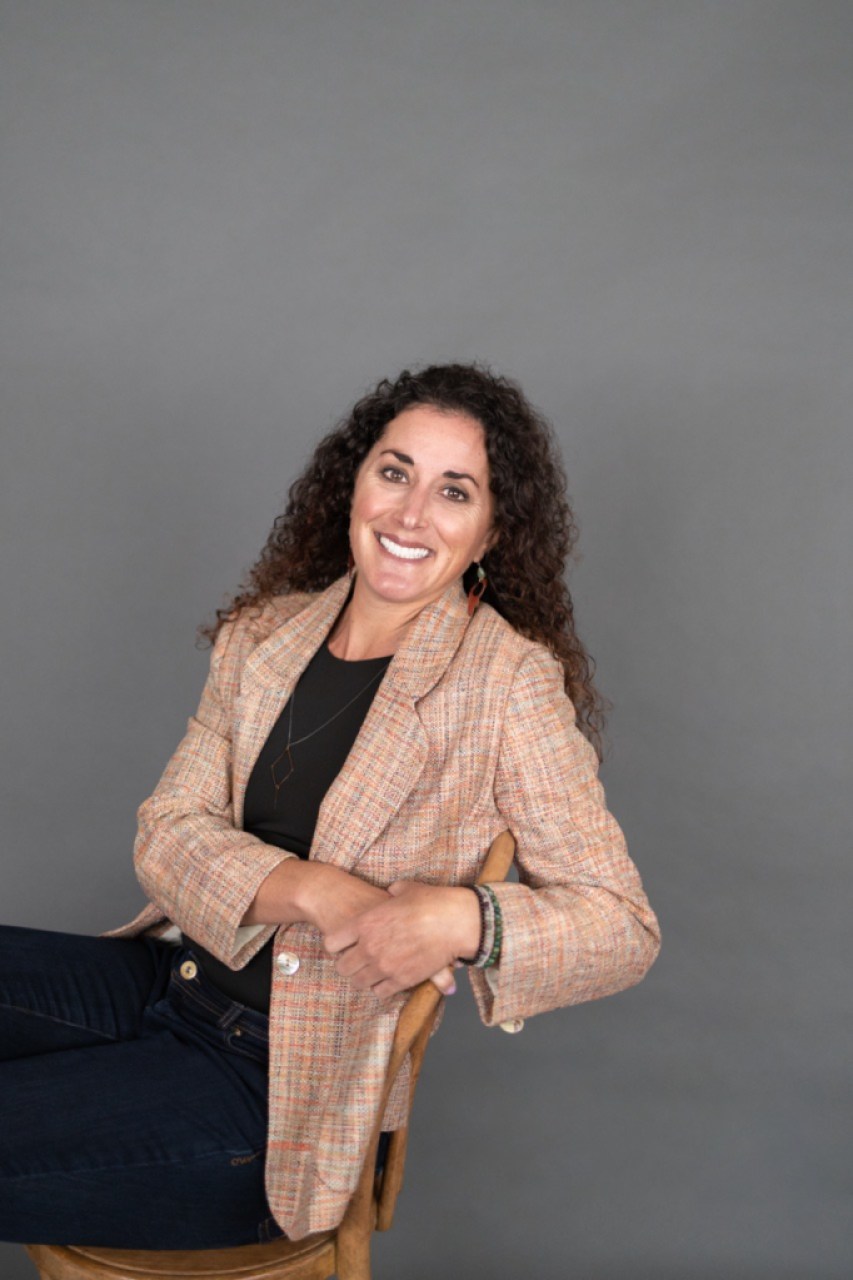
“What do blind people dream?” Brianna Pettit wondered while working on a project when she was a 6th-grade student at Peabody Elementary School some years ago. Her family lived not far from the Braille Institute on De la Vina Street, and so the young Pettit asked her question to “the sweetest old lady” who described a sensory dream she had of riding in a convertible with the wind blowing in her hair, smelling salt water, and hearing gulls and crashing waves.
That conversation was the first step for Pettit in becoming an orientation and mobility specialist. She graduated UC Berkeley, worked with the Braille Institute, and got a special education master’s degree at Cal State Los Angeles. But she also realized that she loved being outdoors — she had been a junior lifeguard and played soccer during high school, and was on the triathlon and cycling teams at Berkeley — so she decided to embrace both her passions. Her business, Blind Fitness, was born.
The nonprofit combines the friendships and community Pettit loved about her sports world with the positive task to help blind people increase their mobility. Pettit said she hangs back as her students learn to sweep a cane across a sidewalk to find obstacles, or when they stand still to listen for traffic. And she gave a tip about helping someone trying to cross the street: “Ask if they need help first, before touching them.”
A fledgling 501(c)(3), Blind Fitness encompasses cycling, surfing, and canoeing, with other activities burgeoning on Pettit’s to-do list.
“Sweat is good!” Pettit said of the once-a-month Walk and Run at the Beach, where tandem pairs — one blind, one sighted — set their own pace across the sand. Her volunteers describe the setting as the pairs run, and friendships form as each learns from the other.
“It’s a beautiful thing to witness,” Pettit said.
Cassie Lancaster, Kim Phillips, Katie Kinsella
Mission Scholars
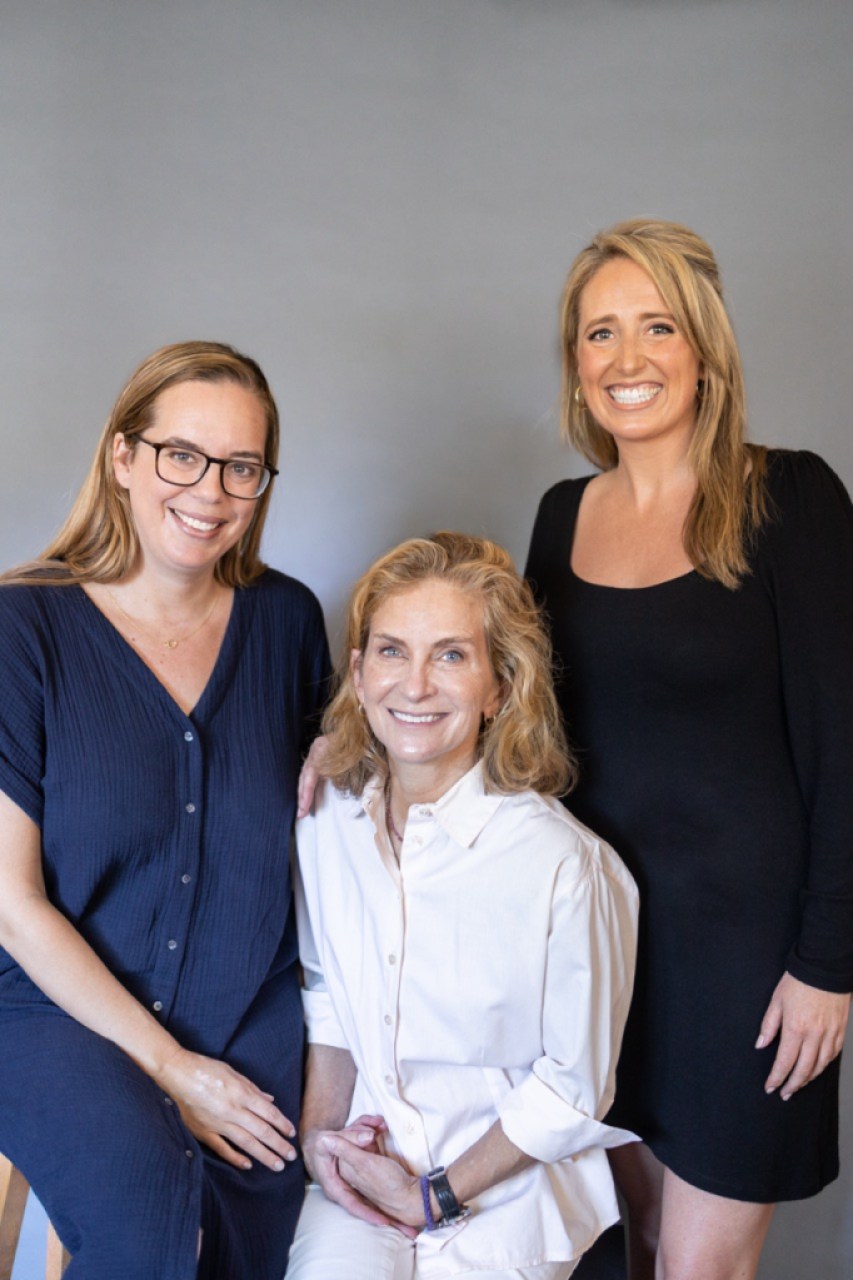
On a fateful December day on the Public Market’s patio five years ago, Kim Phillips, Cassie Lancaster, and Katie Kinsella sat down and decided to make the college dreams of Santa Barbara kids a reality on a larger scale than they had before. Thus, Mission Scholars — a nonprofit that supports students from their sophomore year of high school all the way through their college graduation — was born.
“We have tremendous resources in Santa Barbara, but there’s also tremendous need,” explained Lancaster, the nonprofit’s executive director.
A majority of the students they help are low-income and first-generation college students. The organization provides everything from mentorship to career development to financial literacy, ensuring that the students thrive on college campuses and graduate in four years with little to no debt.
“And we’re seeing a ripple effect already,” said Kinsella, director of operations. “These students are becoming the leaders, the experts, and the mentors for younger students, and just creating this generational change in their families and the community.”
In their first year, Mission Scholars served a cohort of 10 students. But now, they work with more than 150 students across South County every year, and they’re still growing. Currently, 93 percent of Mission Scholars students are enrolled in four-year universities, and more than 95 percent of their combined cost of attendance is covered by scholarships and grants.
“Many of our students are on full rides to schools like NYU, Boston University, USC, and UCLA — all these schools that they never thought would be accessible to them,” Kinsella said. “They break ceilings.”
One scholar attending New York University on a full-ride scholarship told Kinsella that during her first winter break, she took her younger sister and cousins out for ice cream, and all they could talk about was wanting to go to college like Wendy.
“She never thought this would be possible for her family,” Kinsella relayed. “She had never even been to San Diego, let alone New York. So when these students are trailblazers, and show that it can be done, it opens up limitless opportunities for other students.”
But what really makes these three women outstanding is their personal touch. Phillips, the organization’s lead advisor, for example, has driven to Los Angeles to help a student who was struggling at USC, stayed up all night to help students with college applications, provided a shoulder to students going through hard times, and once gave a student a sewing machine after she mentioned wanting to take it up as a hobby.
“We couldn’t do this without all the people in Santa Barbara, who support us in so many different ways,” she said. “It takes a village. And our resources are still somewhat limited, but we’re always looking for more students that we can support.”
Donald Flanigan
Cycle Race Sensation

Competitive cycling involves the mastery of three disciplines: the road race, the criterium, and the time trial. Without Donald Flanigan, Santa Barbara cyclists would have nowhere to turn for that last category.
For 35 years, the radiologist-by-career has singlehandedly organized the Monday Night Time Trial on the streets of Goleta every week from March through October. He manages the route, tracks the times, and presents awards for every age group at the end of each season. And this race — which features more than three dozen cyclists each week, from near-professional cyclists to newbies — is completely free to enter.
“There were no time trials locally, but it’s a very important part of cycling, so that’s why I wanted to bring it to Santa Barbara,” said Flanigan. “We have kids who are 8 years old and we have them up to the oldest stage, which is probably me at 84.”
Flanigan’s sporting life started on the water. He won collegiate and national championships on rowing teams and even competed internationally for the United States, skipping the 1964 Olympics in Tokyo to attend medical school. He came to Santa Barbara in 1975, conducting ultrasounds on countless babies until retiring six years ago.
Today, the event is branded as the Bill Poehler & Doug McFadden Memorial in honor of two cyclists who died in recent years. The July race serves as the official time trial of the Semana Nautica.
“Cycling is a very tight community — pretty much everybody knows everybody else,” said Flanigan, who throws a party at his home after each season. “Particularly if you’re racing, you develop very close relationships. Some of the people have been doing this as long as me.”
Gina Sunseri
ASAP’s Cat Herder
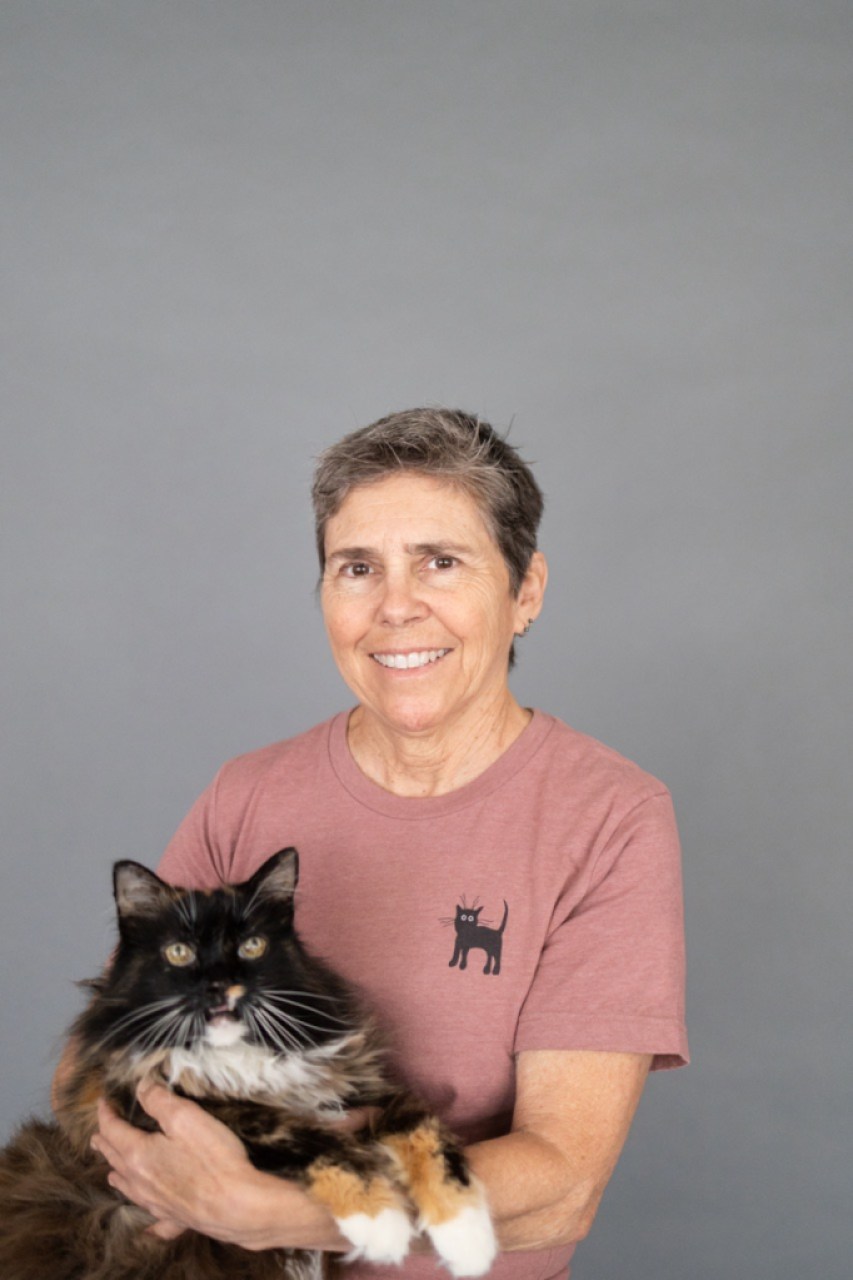
It wasn’t until after she left the fire department that Gina Sunseri started rescuing cats from trees in earnest. But since retiring from her 25-year career as a city fire inspector/investigator, Sunseri now spends most of her time as ASAP’s volunteer community cat coordinator.
In this role, she helps trap free-roaming cats throughout the county, getting them needed veterinary care, including neutering, and whenever possible, she locates their lost owners or helps find them new ones.
Sunseri responds to calls at any hour, always carrying a microchip checker with her into the field to be sure the “abandoned” cat she’s climbed a tree to rescue doesn’t actually live with a family three doors away. She calls the microchip company herself to try to locate the owners. In one dramatic reunion, she reunited a family that had relocated to Lompoc with their cat who had been found in Montecito and had been missing for an entire year.
As for ownerless outdoor cats, after giving them veterinary help, she will release them back into their neighborhood if residents are game to keep looking after them (which they often are). She also finds “alternative placement,” for feral felines on ranches and in Montecito and Hope Ranch estates to help hunt rodents.
Sunseri has four rescue cats of her own, but she also fosters litters of kittens, as well as disabled, injured, and senior cats every year. All told, Sunseri estimates she’s helped hundreds of cats, whose luck has certainly improved by crossing her path.
While the work can be heartbreaking as often as it is heartwarming, she says, “I do it because it just feels natural to me to serve my community and to try to create a kinder, gentler world for animals. And that just happens to be cats.” She does also volunteer at the bunny shelter one day a week, “But I’m really, really about the cats.”
Gunpowder Press
Literary Lights

Like the explosive propellant in its name, Gunpowder Press is small but packs a powerful punch. The two-person poetry press, with Santa Barbara Poet Laureates David Starkey and Chryss Yost at the helm as publisher and co-editor, respectively, has published more than 30 titles featuring an acclaimed roster of poets from all over the country since its founding in 2013.
This includes individual titles by the annual winners of the Barry Spacks Poetry Prize, so named in memory of Santa Barbara’s first Poet Laureate, and a beloved mentor to both Starkey and Yost. More than 75 poets have been recognized as winners or finalists for the honor, with some of the most distinguished poets in the U.S. as final judges for the prize.
Often partnering with distinguished institutions for their anthology series, the Shoreline Voices Project, Gunpowder Press has worked with Lotusland on two volumes, Buzz and Rare Feathers; with Santa Barbara Museum of Art on To Give Life a Shape; and with Santa Barbara Public Library and their Edson Smith Archive on Big Enough for Words. Their most recent anthology, launched this month, is Out of the Ground, poems inspired by Santa Barbara Botanic Garden.
“It’s a labor of love for both of us,” says Yost, whose keen eye for design is responsible for what Starkey describes as “being foundational to the look that would go on to define every single book that we published at Gunpowder Press.” That look, Starkey says, “is very elegant and high-end and most definitely a labor of love.”
As Mary Brown, one of several nominators, aptly put it, “The literary scene in Santa Barbara is vibrant because of the steady, creative, and collaborative work of David Starkey and Chryss Yost.”
Jerry Roberts and
Hap Freund
Newsmakers
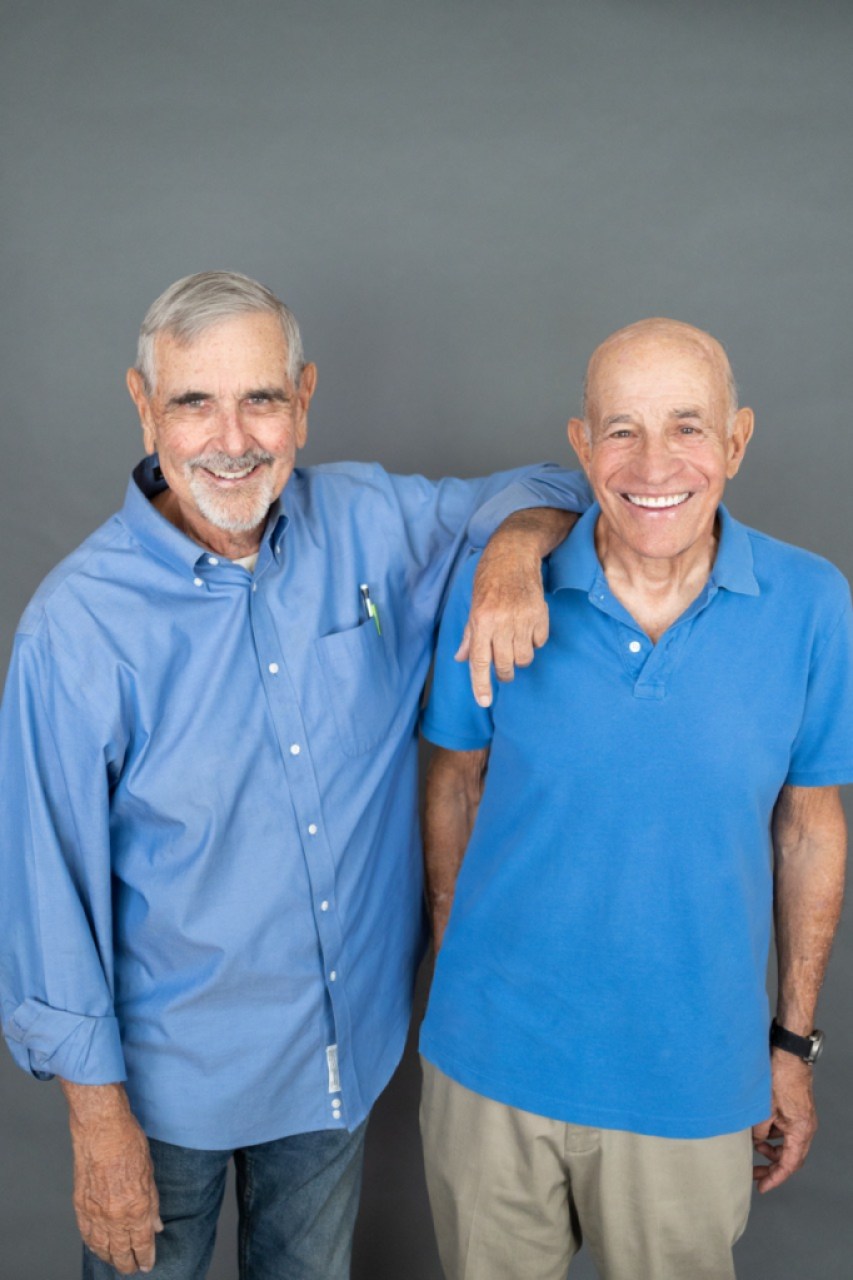
With more than 100 years of combined professional experience in news and media, producer Hap Freund and host Jerry Roberts of Newsmakers with Jerry Roberts have seen it all: from Roberts’s time as managing editor at the San Francisco Chronicle — or his front-row seat to the chaotic crumbling of the Santa Barbara News-Press — to Freund’s many lives as a lawyer, professor, TV producer in Honolulu, and executive director of TVSB’s predecessor S.B. Channels.
In 2014, the duo came together to fill a void in Santa Barbara’s news landscape following Roberts’s departure from the News-Press. “That left a hole in the market for analysis, investigative reporting, and commentary,” Roberts said. “We wanted to be part of that conversation.”
While Roberts is the face of the show, Freund is the brains and muscle behind the operation. His wealth of experience in producing hard-hitting TV lent itself well to Santa Barbara with its passionate readers and viewers who want to know “the story within the story” from all sides.
Over the years, the award-winning show has evolved from its first incarnation as City Desk (2014-2017), which had the feel of a behind-the-scenes peek into a newsroom edit meeting, to the in-studio panel of journalists and city movers-and-shakers Newsmakers. During COVID, the show went fully online, which Freund now counts as a blessing in disguise given how easy it became to have every guest just a Zoom link away.
In recent years, Roberts and Freund have used the show to spotlight new voices, including up-and-coming journalists, especially women and people of color, to highlight issues that matter most in the community, always keeping everything “hyper-local,” as Roberts put it.
And they do it, as they say, for the love of the game. “We are blessed and privileged to be at this point in our retirement,” Roberts said, joking that they have pioneered a new business model of “offering journalism for free.”
Jamal and Saida Hamdani
Promoting World Harmony

Talk to Jamal Hamdani for five seconds and Elvis Costello’s fiercely non-ironic anthem, “(What’s So Funny Bout) Peace, Love, and Understanding” jumps irrepressibly to mind. Hamdani, an engineer, entrepreneur, world citizen, and Santa Barbara resident since 1985, has been co-conspiring with his wife of 40 years — the much-admired pediatrician Saida Hamdani — to promote peace, love, and understanding through their Hamdani Foundation. In the last 20 years, the Hamdanis have persuaded no fewer than seven Nobel Laureates to give talks on the subject as part of the World Harmony Lecture Series they launched in conjunction with the Walter Capps Center. Along the way, they also persuaded 250,000 people to sign on the dotted line in support of their core unifying principles; “Do we give others what we want for ourselves? Do we speak the truth? Are we fair and just in all our thoughts and actions?”
When all the written information on the planet can be squeezed onto just one microchip, the Hamdanis have argued, it’s not right that one half the world’s population has less than one percent of its wealth. From such inequality, injustice springs. But Jamal Hamdani — an entrepreneur who runs three companies — remains optimistic that change is possible even when strife and conflict remain so intractable as it is in “the Holy Land,” as evidenced by the bloodshed between Hamas and Israel. “Nature abhors injustice,” Hamdani stated. “There’s no evidence in the world that injustice has gone on forever.” When still a teenager — right after the assassination of Martin Luther King Jr. and Robert Kennedy, Hamdani complained to his father how the world had become a horrible place. “I know,” his father replied. “But what are you going to do about it.”
Later — in the early 1990s, Hamdani just happened to be in South Africa on a business venture where he just happened to meet South African revolutionary and president Nelson Mandela. “When I shook his hand, there was a beautiful light in his eye,” Hamdani said. “The path to world harmony goes through each one of us.”
Jaylon Letendre
Gung Ho for Girls’ Flag Football

The only thing more impressive about the sudden rise of flag football in Santa Barbara is how quickly girls climbed to the top of the heap. After only a few short seasons of elementary and junior-high athletes carving out their own female divisions — or, in some cases, simply beating the boy teams — girls’ flag football became an official high school sport this fall. For that, Jaylon Letendre deserves a sky-high high-five.
It started when the mother of three coached her oldest son and his fellow 6th graders during Noon League at Foothill School, where students play organized sports during lunchtime. “I had to coach myself on how to coach football,” she laughed.
Her female students wanted to keep playing together, but FNL, the main flag league in town, did not yet have an all-girl team. Letendre changed that.
“That first season was really hard,” she said. “People laughed at us and weren’t nice, but the girls didn’t care that they were gonna play with boys every week. They were really brave and fierce. They only wanted to play harder. They won games. We had boys crying on the sidelines.”
That one team snowballed into many more, eventually launching training camps and, by this fall, there were three all-girl divisions with more than 100 athletes. When it was named a sport this year, Letendre proudly recalls telling her 8th-grade team that their careers weren’t over.
“The tears and the screams and the celebrations that happened — it was so cool just to be part of that process,” said Letendre, who’s also a longtime YMCA board member, PTA veteran of Foothill School (with an increasing role at Dos Pueblos), and now active in the National Charity League with her daughter. “We’re gonna see more and more of this. There are a lot of girls who just want to show their love for football.”
Mariluz Meza
Personal Income Tax Genius
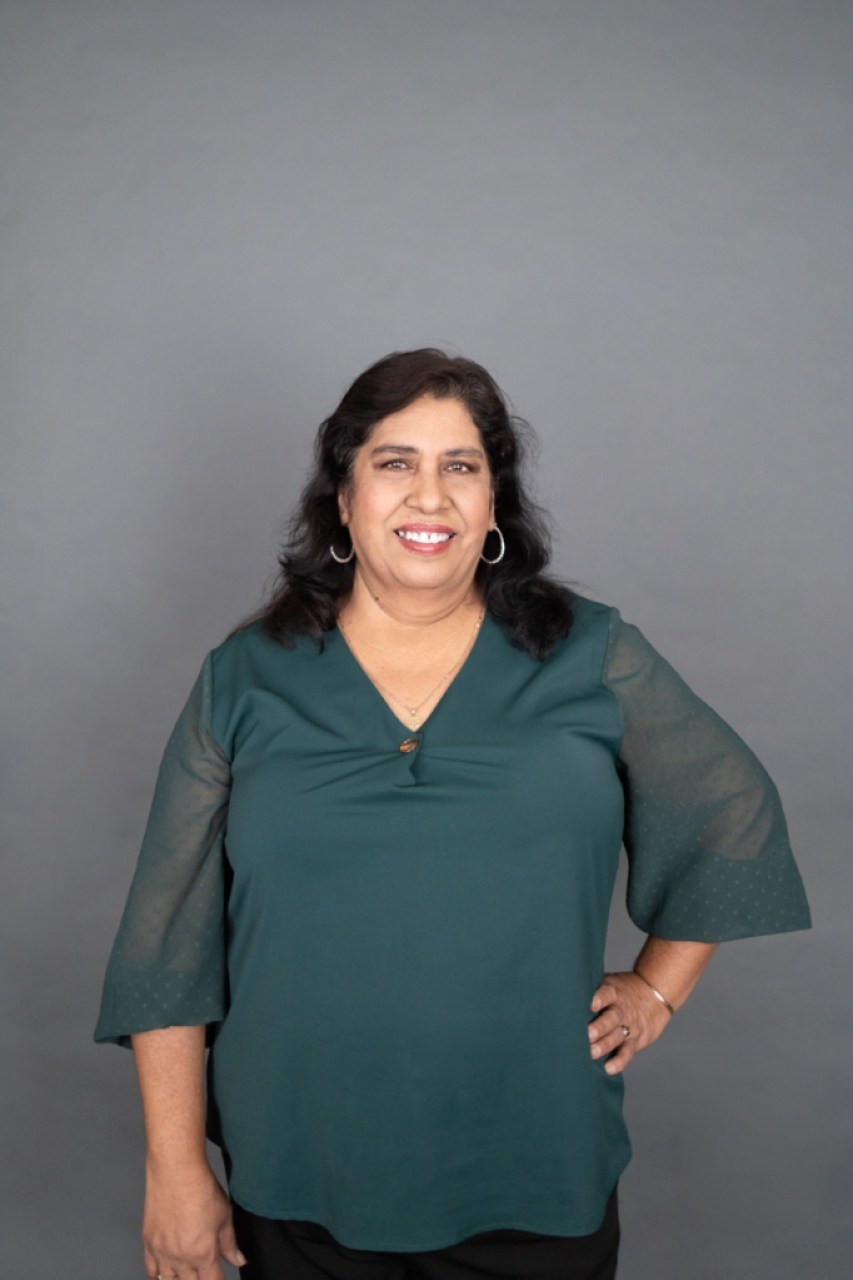
What started as a small Housing Authority project to help tenants with their taxes has blossomed into a 22-year, full-time occupation for Mariluz Meza, who works at VITA, United Way’s Volunteer Income Tax Assistance service.
VITA operates six days a week at seven different locations — including the Eastside Library, UC Santa Barbara, and Solvang — where people can find help filling out one of the most befuddling of documents: the Internal Revenue Service tax forms. Every year, more than $2 million is refunded to about 3,000 people, and every year, said Meza, “we work to improve that amount.”
Of the process that most of us groan and postpone to the last minute every year, Meza believes it’s not that difficult. And that attitude shows in her detailed knowledge of personal tax laws and the tax credits people often don’t know they are entitled to, as well as unraveling some of the Internal Revenue’s darkest mysteries, such as the Earned Income Tax Credit.
Even among the 150 dedicated VITA volunteers, Meza stands out in her determination to guide people through the tax process, and those she helps never forget her. Each year, people return, asking for her by name and bringing donuts, avocados, and oranges in gratitude — along with their tax documents.
Filling out the forms are especially important for people without green cards, and Meza, who is fluent in Spanish, understands this. “They pay more taxes,” she explained, because they can’t claim any personal deductions, “but paying their income tax helps when they apply for residency because it proves they worked here.”
Meza makes herself available to all her clients, taking their phone calls even when visiting her family in Mexico. “Okay, send me a picture of the document,” she’ll say from down in Sinaloa, and then she helps solve whatever the problem is.
“I love helping people,” Meza said with a smile.
Dr. Michael Kearney
A Friend at the End
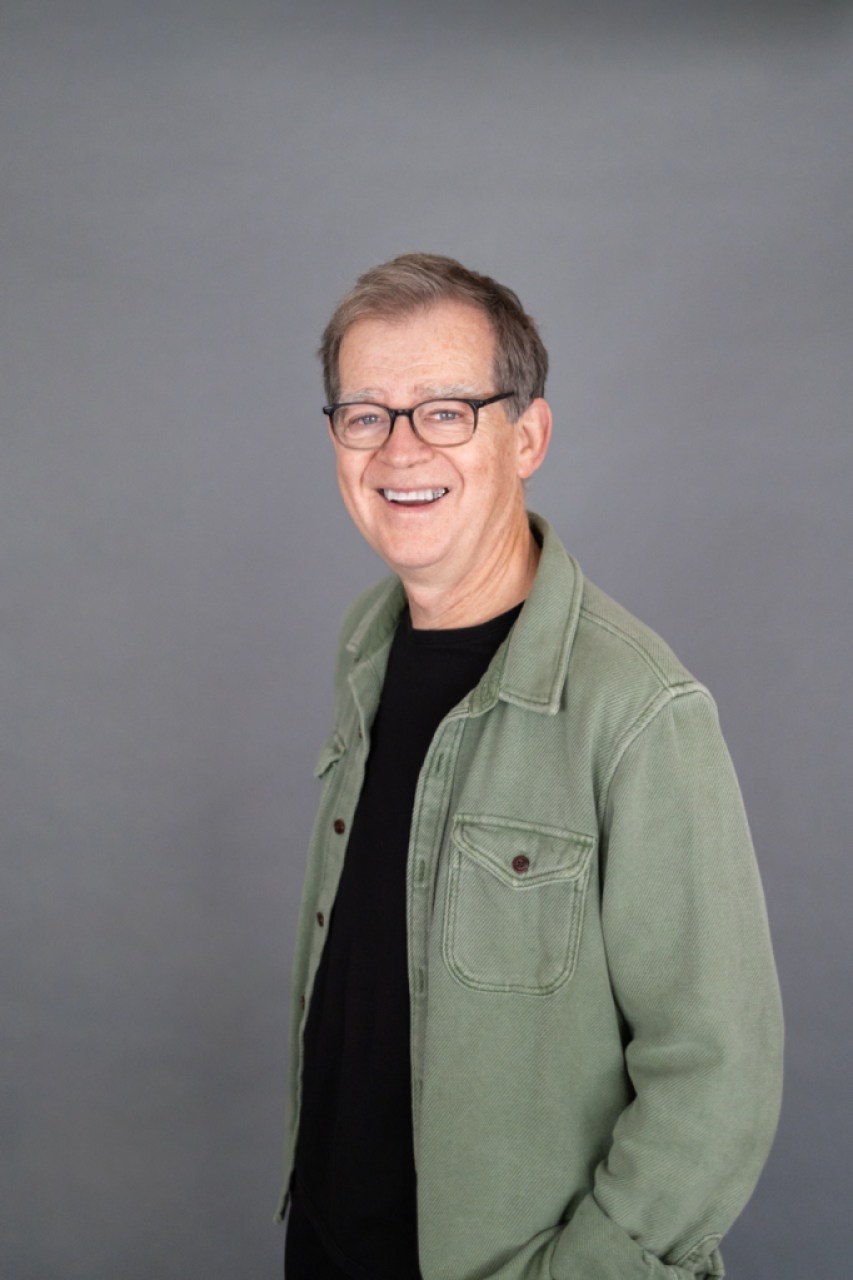
“I first met Dr. Michael Kearney about 20 years ago when he moved to Santa Barbara,” recalled longtime colleague Dr. Michael Bordofsky. “I was a lonely hospice doctor with VNA Health, and he was an internationally known palliative medicine physician, researcher, and author from Ireland.”
At the time, the field of palliative medicine was well-established in the U.K. and Canada but still in its infancy in the United States. And it was essentially unheard of in Santa Barbara, “where we had one small hospice, no such thing as palliative care, and other than in the AIDS community, little interest in how we cared for dying and seriously ill patients,” Bordofsky said. How lucky we were, then, to have one of the most knowledgeable and experienced palliative doctors in the world land in our community.
Over the next two decades Kearney played a pivotal role in the creation of Santa Barbara’s robust home hospice, Serenity House, inpatient palliative care, and outpatient palliative care. “And he managed to accomplish all of this while continuing to direct care for thousands of suffering patients and families, never giving in to burnout, improving lives and deaths one patient, one family, at a time,” Bordofsky said.
Hospice and palliative care, he continued, emphasize listening to the patient, meeting them where they’re at, and bringing deep empathy and understanding to what really matters to that suffering person and their family. “Anyone who has been in a room with Dr. Kearney quickly understands that he embodies these qualities,” Bordofsky said.
When confronted by these kind words, Kearney politely demurred. He pointed to the nurses, social workers, and other staff as doing the true yeoman’s work. He also expressed mutual admiration for Bordofsky. “The hero is really the team,” he said. “I’m just taking one for the team.”
In recent months, Kearney has turned his focus toward a parallel part of his professional life, that of an author and teacher. Alongside his wife, Dr. Radhule Weininger, he helps run Mindful Heart Programs, which offers accessible meditation practices, and he just released his fourth book, a novel titled Becoming Forest — A Story of Deep Belonging about personal resilience in the face of the climate crisis.
Pat Clemens
Down Home at Patco

Pat Clemens is seriously old-school, and not just because his grandfather was second cousins with Mark Twain. When Clemens moved here in 1951 at age 5, Santa Barbara was still a small town, and the Mesa, where he grew up, still had farms. His father built the first grocery store there, and the city limits sign read “18,000 inhabitants.” The farmer, whose farm was near Cliff Drive and Oliver Road, used to drop off free fruits and vegetables on his neighbors’ doorsteps. “That’s just what happened,” Clemens mused.
This decidedly down-home vibe still permeates every nook and cranny of the
jewelry store on Haley Street — Patco Jewelry — out of which Clemens has done business for nearly 50 years. He makes and designs jewelry, buys pieces on consignment, and repairs jewelry in various stages of distress. It’s strictly a word-of-mouth sort of place: where you go to get your wedding ring resized when it no longer fits, and where you get old family jewels — laden with emotional memories — repurposed. Clemens, who attended McKinley, Washington, Santa Barbara Junior High, and San Marcos High School before attending Westmont and serving in the Navy, takes care of his customers. “We try to do solid work at reasonable prices,” he said. “We’re not always perfect, but that’s our philosophy.” Business is always brisk.
Clemens and his staff — some have been there for decades — have seen Haley Street change for the better, the worse, and the better again. Since 2016, Clemens, who has a degenerative muscle disease, has been confined to an electric wheelchair with an American flag flying from the top. Fortunately, his large hands remain nimble. At 80 years old, he’s still happy to go to work. He’s proud he kept all his workers through the economic ravages of COVID. He’s proud that his shop contributes to various nonprofits, such as the Rescue Mission. “This community has taken care of me. You have to give back,” he said. “It’s what you do.”
Roger Durling
Upholding the Power of Film

Roger Durling was an entirely unknown quantity when he skyrocketed from quirky volunteer to executive director of the Santa Barbara International Film Festival (SBIFF) in 2002. Two decades later, he’s one of the better-known Santa Barbarans in both quantity and quality of contributions, having turned the once-troubled event into the envy of the cinema circuit.
“Nobody had taken advantage of all the potential that Santa Barbara had,” said Durling. “If you look at all the successful film festivals, they’re situated in a destination where you want to go. Then we had the downtown corridor with all of the movie theaters and hotels, and the proximity to Hollywood. The big thing was timing.”
So he positioned SBIFF to be between the Oscar nominations and the Oscars themselves, then amplified the celebrity tributes and industry panels. An immediate hit, it now brings tourists and business to town during an otherwise slow season.
But that’s just the opening credits to Durling’s contributions. Under the banner of SBIFF, he refurbished the Riviera Theater into a world-class movie house, developed multiple programs for aspiring filmmakers, and penned daily newsletters (which became a book) that helped keep the festival relevant during the pandemic.
“We were the last event before COVID,” said Durling of their February 2020 festival. “And we were the first event that went big after COVID in 2022,” he said, with a full-scale fest. But even during the pandemic shutdown days of 2021, he kept the event alive by erecting drive-in theater screens down by the waterfront. Durling is also a popular contributor to the Independent, profiling visual artists and community leaders, including the six-year run of his weekly Santa Barbara Questionnaire. Out of everything, he’s most proud of teaching a generation of students through his intro-to-film classes at Santa Barbara City College.
“I’ve been thinking a lot about legacy, and I want people to remember me as a teacher,” said Durling. “Honestly, it doesn’t feel like work.”
Scott Guttentag
School Counselor Extraordinaire

For 34 years, Scott Guttentag, a k a Scotty G, has roamed the halls of Dos Pueblos High School, helping to establish a campus culture that reflects his mantra that “every student is cared for.” As a school counselor and the activities director, Guttentag’s guidance and support have spanned more than three decades of helping DP students receive their high school diploma.
In 1990, the New York native turned UCSB Gaucho was first hired as a school liaison at Dos Pueblos. His mission? To find and help kids falling through the cracks. He initiated a class, now called Guidance Studies, that allows students to catch up on their work. It has played such an important role in the success of so many students graduating that the curriculum is now implemented throughout all three of the district’s high schools.
As the activities director, one of Guttentag’s goals is trying to make students love being in high school as much as he did. “I was Mr. High School,” he said. “Every student should feel like there is something fun for them. Whether that is sports, clubs, music, or arts. Activities help keep school fun.”
From counseling students with various academic or life issues to planning fun activities with his leadership group, Guttentag shows up every day, never expecting anything in return. “The win is students being comfortable to have a safe space. Knowing that there is help if they’re willing to receive it,” Guttentag said. “The relationships I make with students is the greatest part of my job; one ‘thank you’ from past students gets me energized and motivated for years to come.”
Guttentag credits his family as his greatest support: his wife, Natalie; and their two children, Gabby and Zack. “I wouldn’t be able to do what I do without them,” he said. “Having both my kids wanting to come to Dos Pueblos was the ultimate compliment.”
Silvana Kelly
Breast Cancer Resource Center

On the weekends, Silvana Kelly said she tries to be “cancer-free.” That’s because, Monday through Friday, she is a shoulder to lean on for women in Santa Barbara County and beyond who are coping with their breast cancer diagnoses.
A survivor herself, Kelly knows that connecting these women with resources, counseling, and a community makes all the difference. She began working at the Breast Cancer Resource Center 18 years ago and never looked back, helping more than 1,000 women since then.
“You walk into this new world and find that you’re not alone,” she said. “You find warmth. I tell them, ‘This is part of the journey; this is just one part of your life, and you’re going to move through it in different phases.’ ”
With her organizational skills, Kelly has helped the once-small, volunteer-run organization grow, standing on the shoulders of the women who founded it more than 25 years ago. “Our work begins when the client leaves the doctor’s office,” Kelly said. Whether a client is looking for one-on-one counseling, a support group, integrative care, or more information about treatment and other topics, they can expect to receive it at no charge.
“I’m grateful and humbled for the experience,” Kelly said. “It lets me know at times how thankful I am to be alive and to be thriving, and to let them know, ‘Yes, I’ve been through what you’re going through.’ It just gives me a lot of joy to see somebody come in with their shoulders up to their ears, and suddenly, by the time we’re done, they relax. You know you have filled them with hope.”
Susan Rose
The Queenmaker

It was over a series of dinners in 1987 that a group of Santa Barbara women decided it was time, once and for all, to take a seat at the table. Not for another meal, but at the table of power — of elected office — where they were woefully underrepresented. “Otherwise,” said Susan Rose, “we knew we were likely to end up on the menu.”
They formed the Santa Barbara Women’s Political Committee and the very next election helped two women win seats on the Santa Barbara County Board of Supervisors for the first time. “You really need to fight for what you believe in,” Rose said. “You need to stand up and stand out.” Rose herself went on to serve two terms as supervisor, and over the last three decades, she has devoted her unmatched grit and energy to championing the advancement of women, as well as civil rights, affordable housing, family services, environmental protections, and other progressive causes.
While in office, Rose led the effort to save 200 acres of land known today as the San Marcos Preserve and initiated the Safe Parking Program for homeless people living in their cars, a highly successful model that has been replicated across the country. She has served on countless local boards and committees — Planned Parenthood, Anti-Defamation League, Human Rights Watch Council, Antioch University, etc. — but it’s her current work with Emerge California, a statewide political leadership-training program for women, that now occupies most of her time.
Rose is in the process of passing the torch to the next generation of female leaders, even if she’s not ready to completely give it up yet. “I’m sharing it,” she said. She’s mentoring individual candidates and organizing networking events, like the one earlier this month that sold out almost overnight.
“I think we live in a feminist community, and I’m very proud of that,” Rose said. “But I always tell women, ‘I’m going to be watching what you do when you’re in office. Use your vote — your power — to create solutions and make change.’ Because we still have a lot of work to do.”
Suzanne Requejo
Bringing Art to Families

For more than a decade, Suzanne Requejo has been providing an educational and entertaining space for children and their families in Carpinteria with Artesanía Para la Familia, a nonprofit arts and literacy program that hosts events centered around getting kids excited about reading and learning.
Requejo started working in Carpinteria in 2007, when the library had just begun its after-school programming. After kids finished their homework, Requejo would reward them with fun activities such as arts and crafts. Soon, the program began to take shape, and the children were excelling — some who struggled to read in the beginning were now poring over books, and others entered their art into local contests, to much success.
“We always had winners,” Requejo said.
More importantly, she said, parents were noticing a change in their kids, who were now eager to learn and express themselves through art. “When parents pull me aside, that’s the best feeling.”
In 2013, she expanded the library program to include the whole community, with events and workshops for kids and parents from all over town, especially those from underserved or Spanish-speaking households. Artesanía Para la Familia, she said, is “all about arts and literacy,” family participation, and encouraging the entire family to learn and spend time together. At some workshops, there can be three generations all reading together.
Over the years, the events have expanded, with student art exhibitions at the S.B. Museum of Art; trips to the MOXI museum and the Apple Store for technology classes; Story Walks around Carpinteria; author story times and book giveaways; and an annual Día de los Muertos event, which this year brought hundreds out to celebrate at the Carpinteria Community Cemetery.
None of this could be done alone, Requejo said. It took the support of the entire community: Friends of the Carpinteria Library, Carpinteria Children’s Project, and various other organizations and volunteers that help host the Family Literacy Nights, six-week summer camps, and youth mariachi classes, which are all part of the program.
Tara Gomez
Indigenous Inspiration

While growing up in Santa Maria, Tara Gomez knew she wanted to be a winemaker in grade school.
“I loved looking at nature through a microscope,” said Gomez, who’d tag along on winery visits with her mom and dad, a Chumash elder. “I just remember walking by one of the labs and seeing them in their white lab coats doing titration. That was my instant connection.”
Little did she know the hurdles she would face as an indigenous woman entering an industry full of people who didn’t look like her. “It’s predominantly a white and male industry,” explained Gomez, who first worked at Fess Parker and then spent a decade as lab manager at J. Lohr in Paso Robles. “To be on the opposite end — BIPOC and indigenous and LGBTQ — it was challenging.”
In 2010, the Santa Ynez Band of Chumash purchased the Camp Four property in Santa Ynez, which came with a vineyard. Gomez returned to town to launch the band’s own wine brand, Kitá, making her the first indigenous winemaker in history to produce wine for her own tribe. By the time the brand was shut down in 2022, Gomez had become an international inspiration, mentoring the next generation through the Roots Fund and James Beard Foundation.
“Mentorship is something near and dear to my heart,” said Gomez. “I have an open door for other BIPOC and indigenous people who want to get into the industry.”
In 2017, she and her wife, Mireia Taribó, launched their own winery, Camins 2 Dreams in Lompoc. “We’re a safe space for anyone to come in and taste wine,” said Gomez, who feels like she’s helped the wine industry make progress. “I do see the changes, but I still think we have a long way to go.”
Women’s Fund
of Santa Barbara
Banding Together for Big Impact
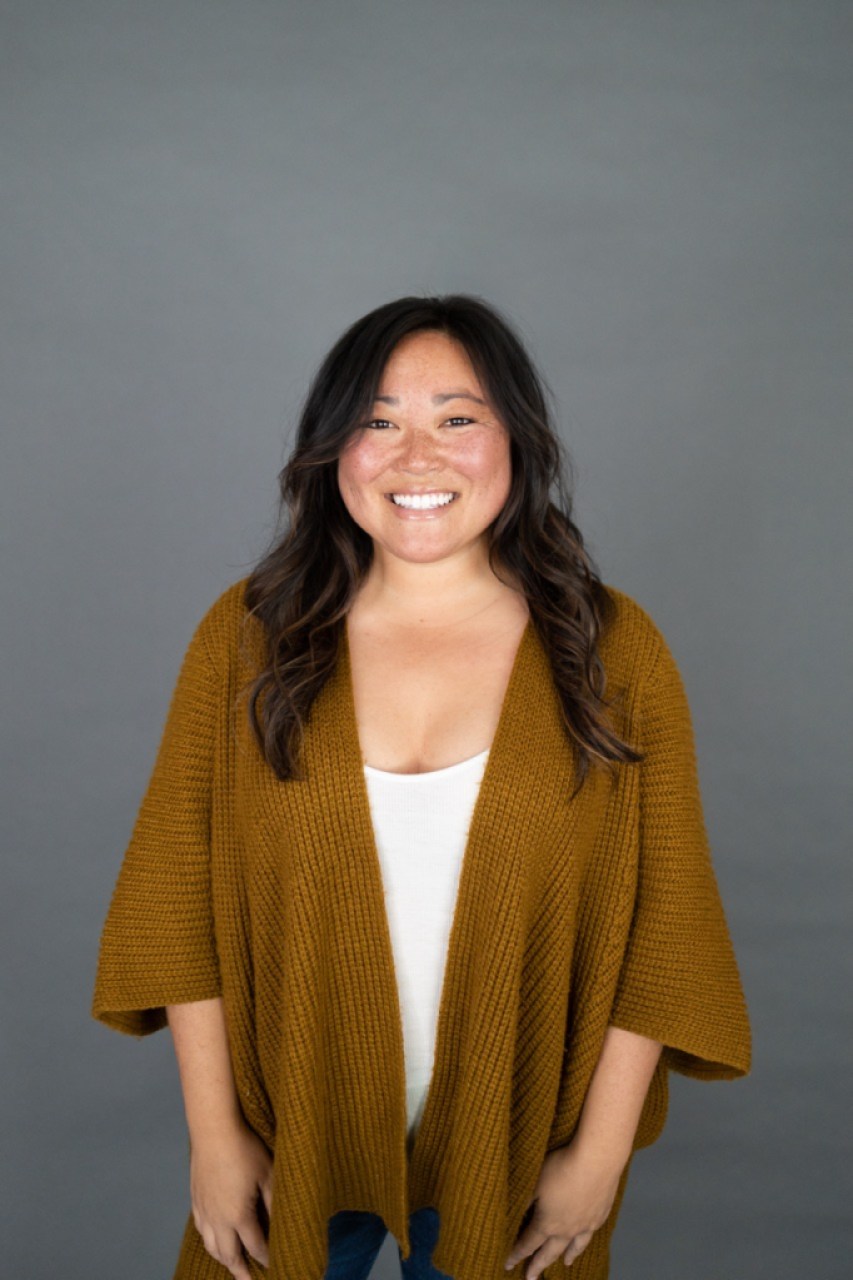
Banding together to parlay small donations into large — and often transformational — grants for worthy causes, the Women’s Fund of Santa Barbara “expects to award one million dollars or more in 2024, our largest grants pool ever,” shared Jamie Dufek, the all-volunteer board chair who leads this diverse “giving circle” of about 1,300 local women. Since its establishment in 2004, for the past 20 years the Women’s Fund has been on a mission to educate and inspire women to engage in making lasting change in our community, and together they pool their charitable dollars to create a significant impact on the lives of women, children, and families in South Santa Barbara County.
It all started when Carol Palladini gathered with 11 other philanthropically inclined women who were tired of the traditional fundraising grind of organizing events and spending lots of money to raise money. “The women founders had a really amazing idea,” said Dufek. “I think the fact that we’re looking at a million-dollar grants pool shows kind of the growth and the evolution of the way that women in our community think about philanthropy.”
The heart of the organization is its simplicity. Membership is open to all women who are willing to make an annual minimum contribution. Individual members contribute $2,750 or more and get one vote on where they would like the grants pool to go. Group members (minimum $275 donation) combine their funds to cast a vote on what to fund. The combined money allows members to transform their small donations into substantial grants for impactful projects that address critical needs in our community.
They’ve granted nearly $10.5 million to local nonprofits thus far, and they’re just getting started. “Having a big impact is an area that’s very near to our hearts,” said Dufek.




You must be logged in to post a comment.